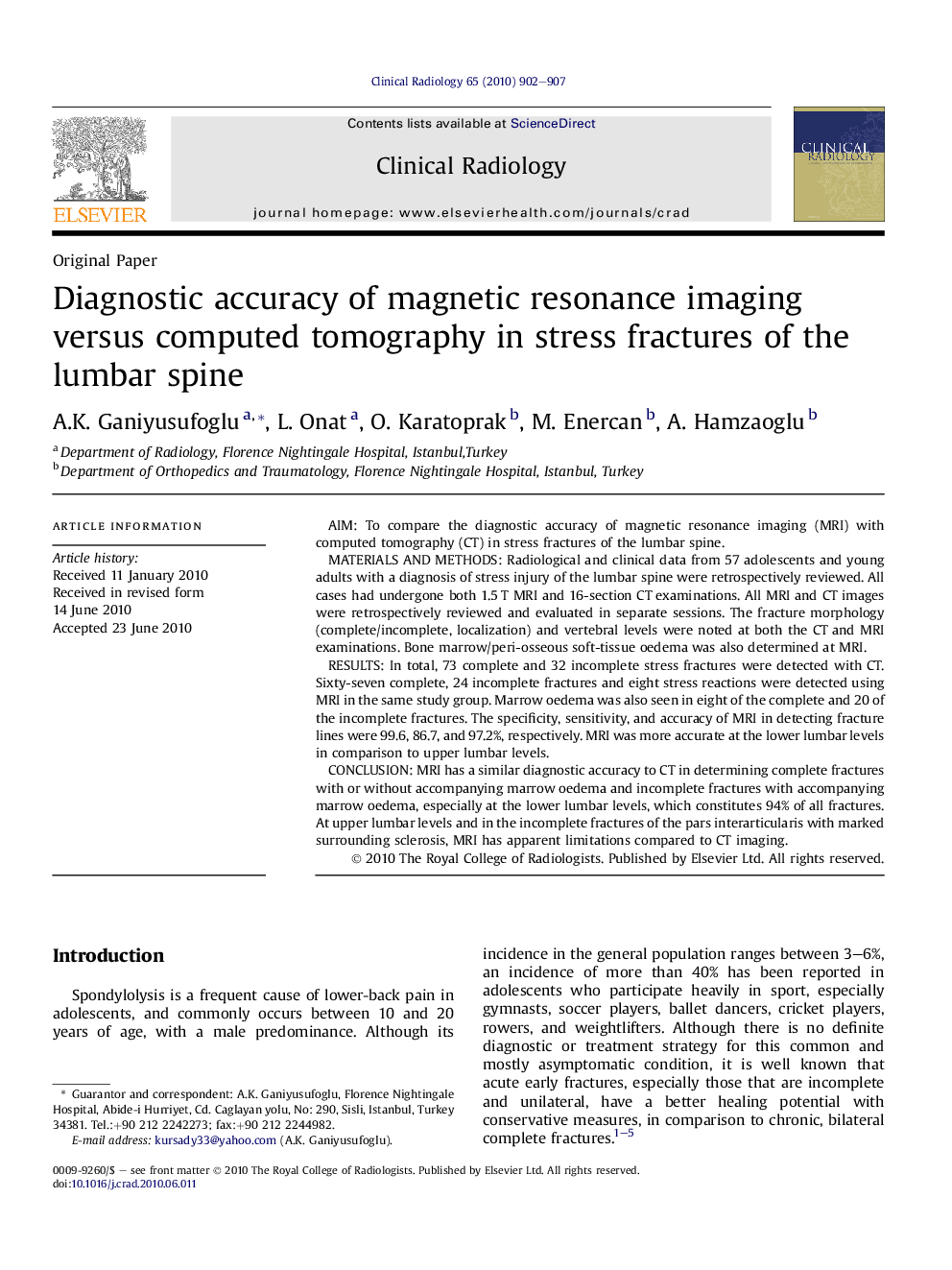| Article ID | Journal | Published Year | Pages | File Type |
|---|---|---|---|---|
| 3982970 | Clinical Radiology | 2010 | 6 Pages |
AimTo compare the diagnostic accuracy of magnetic resonance imaging (MRI) with computed tomography (CT) in stress fractures of the lumbar spine.Materials and methodsRadiological and clinical data from 57 adolescents and young adults with a diagnosis of stress injury of the lumbar spine were retrospectively reviewed. All cases had undergone both 1.5 T MRI and 16-section CT examinations. All MRI and CT images were retrospectively reviewed and evaluated in separate sessions. The fracture morphology (complete/incomplete, localization) and vertebral levels were noted at both the CT and MRI examinations. Bone marrow/peri-osseous soft-tissue oedema was also determined at MRI.ResultsIn total, 73 complete and 32 incomplete stress fractures were detected with CT. Sixty-seven complete, 24 incomplete fractures and eight stress reactions were detected using MRI in the same study group. Marrow oedema was also seen in eight of the complete and 20 of the incomplete fractures. The specificity, sensitivity, and accuracy of MRI in detecting fracture lines were 99.6, 86.7, and 97.2%, respectively. MRI was more accurate at the lower lumbar levels in comparison to upper lumbar levels.ConclusionMRI has a similar diagnostic accuracy to CT in determining complete fractures with or without accompanying marrow oedema and incomplete fractures with accompanying marrow oedema, especially at the lower lumbar levels, which constitutes 94% of all fractures. At upper lumbar levels and in the incomplete fractures of the pars interarticularis with marked surrounding sclerosis, MRI has apparent limitations compared to CT imaging.
